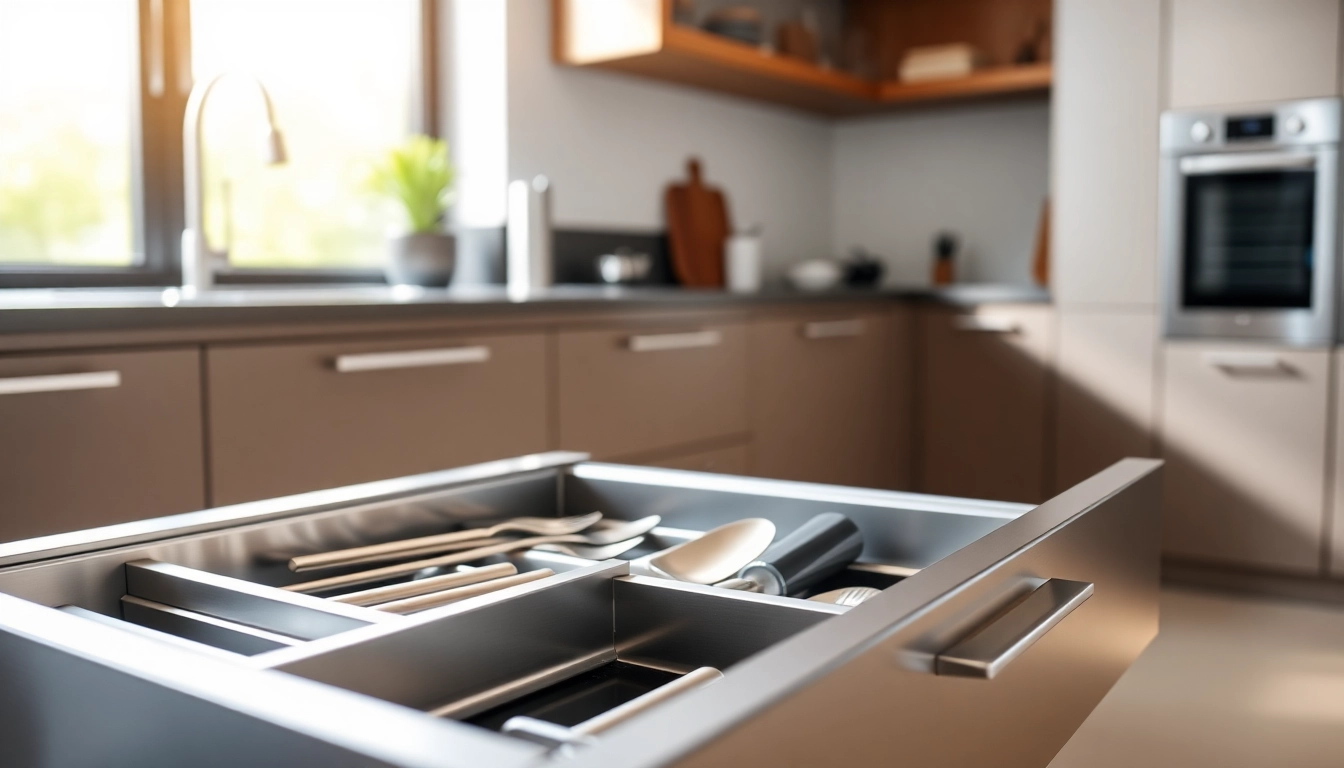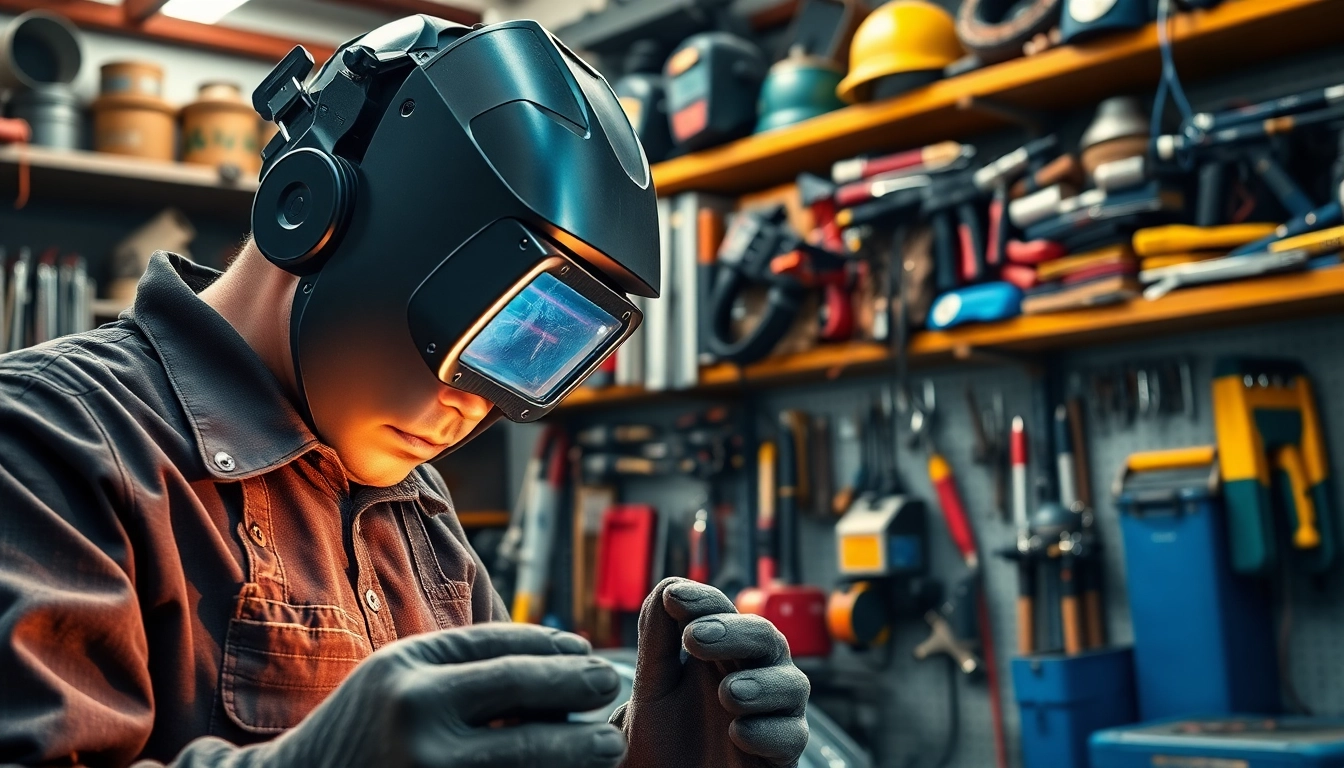Understanding Metal Drawer Systems
Metal drawer systems have become increasingly popular in modern cabinetry, offering a blend of functionality, durability, and aesthetic appeal. These systems are engineered to provide smooth operation and long-lasting use in various applications, including kitchens, offices, and storage facilities. By using high-quality materials and advanced manufacturing techniques, metal drawer systems outshine their wooden counterparts in several aspects. For those seeking reliable solutions for organization and design, Metal Drawer System presents a compelling choice.
What is a Metal Drawer System?
A metal drawer system consists of a framework made entirely of metal, incorporating drawer slides, boxes, and often a variety of features designed to enhance efficiency and aesthetic appeal. These systems typically include ball-bearing slides or undermount mechanisms that allow for smooth and silent drawer operation. The integration of metal not only grants superior strength and load-bearing capacity but also lends a modern look that complements various design styles.
Advantages of Choosing Metal Over Wood
Opting for metal drawer systems comes with numerous advantages:
- Durability: Metal drawers can withstand significant weight and resist warping over time, making them ideal for heavy-duty applications.
- Maintenance: Unlike wooden drawers, metal is easier to clean and maintain, often only requiring a damp cloth to remove dust and grime.
- Space Efficiency: Metal drawer designs can maximize interior space with slimmer profiles, making them perfect for tight spaces.
- Customization: Metal systems can be painted or finished in various colors and textures, allowing for a level of customization that can match any home decor.
- Fire Resistance: Metal does not ignite like wood, providing a safer option in environments prone to fire hazards.
Common Applications of Metal Drawer Systems
Metal drawer systems are versatile and find applications in various settings, including:
- Kitchens: Ideal for storing utensils, cookware, and pantry items.
- Offices: Used for filing systems, utilizing space effectively while keeping important documents organized.
- Garages: Perfect for organizing tools and equipment, ensuring durability in tough conditions.
- Retail Spaces: Metal drawers can enhance display areas, providing customers with easy access to merchandise.
Features to Look for in a Metal Drawer System
Load Capacity and Durability Considerations
When choosing a metal drawer system, understanding the load capacity is crucial. Different systems are designed to support varying weights, so it’s essential to select one that meets your specific needs:
- Standard Load Capacity: Typically between 50 to 100 pounds, ideal for everyday use.
- Heavy-Duty Options: Some models can support up to 200 pounds, suitable for workshops or industrial applications.
- Material Quality: Look for high-grade steel or other alloys that provide enhanced durability and corrosion resistance.
Types of Metal Drawer Slides and Mechanisms
Understanding the different types of slides and mechanisms available is crucial in selecting the right system:
- Ball-Bearing Slides: Provide smooth operation and are ideal for heavy-weight drawers.
- Undermount Slides: Often used for a more seamless look, they are installed beneath the drawer and are less visible.
- Full-Extension Slides: Allow the drawer to pull out completely, providing easy access to all contents.
- Soft-Close Mechanisms: Soft-close features prevent slamming, providing a gentle and elegant closure for drawers.
Aesthetic Integrations for Modern Homes
Metal drawer systems are not just functional; they can also enhance the aesthetic appeal of a space. Key design considerations include:
- Finish Options: Systems can be finished in a variety of colors and textures to complement cabinetry and other furnishings.
- Edge Profiles: Rounded or squared edges can impact the overall style, with sharp lines conveying a more contemporary look.
- Integration with Smart Features: Some systems come equipped with technology that allows for automation, improving usability and offering modern conveniences.
Installation Guidelines for Metal Drawer Systems
Tools Required for Installation
Before beginning installation, gather the necessary tools to ensure a smooth process:
- Power drill / Screwdriver
- Measuring tape
- Level
- Pencil for marking
- Safety goggles
Step-by-Step Installation Process
Follow these steps for effective installation of your metal drawer system:
- Measure and Mark: Determine the height at which the drawer system will be installed and mark accordingly.
- Install the Slide Rails: Attach the side or undermount slides to the cabinet frame, ensuring they are level.
- Assemble the Drawer: Follow the manufacturing instructions to assemble the metal drawer boxes properly.
- Attach the Drawer to the Slides: Carefully load the drawer onto the installed slides, ensuring they are secure and operate correctly.
- Test Functionality: Open and close the drawer several times to ensure smooth operation and make adjustments if necessary.
Common Installation Mistakes to Avoid
Be aware of these common pitfalls during installation:
- Failing to measure accurately, which can lead to misalignment.
- Over-tightening screws, which can strip holes and damage components.
- Neglecting to check for level, resulting in drawers that do not function properly.
- Ignoring manufacturer instructions that specify particular installation techniques or tools.
Maintenance Tips for Longevity of Metal Drawer Systems
Regular Cleaning and Care Techniques
To extend the life of metal drawer systems, incorporate regular maintenance practices:
- Use a soft, damp cloth to clean surfaces, avoiding harsh chemicals that could damage finishes.
- Inspect the tracks and mechanisms periodically for debris and clean as needed for smooth operation.
- Lubricate sliding mechanisms bi-annually to maintain optimal performance.
Resolving Common Issues with Metal Drawers
Being proactive can help resolve issues before they escalate:
- If drawers stick, check for obstructions and clean the tracks thoroughly.
- For squeaky drawers, apply silicone spray on the tracks and moving parts.
- Should the drawer not close properly, inspect the slides for proper alignment and adjust as necessary.
When to Replace Components in the System
Recognizing when to replace parts is essential for maintaining functionality:
- Replace damaged slides if they are bent or show wear that affects operation.
- Consider replacing whole drawer boxes if rust or severe dents compromise performance.
- Regularly assess the structure of your cabinets; if the framework shows signs of wear, it might be time for an upgrade.
Innovative Trends in Metal Drawer Systems
Smart Features and Technology Integration
The advancement of technology has allowed metal drawer systems to incorporate intelligent features such as:
- Automated Opening: Motion sensors allow drawers to open automatically when approached.
- Integrated Lighting: Built-in LED lights illuminate dark interiors, enhancing visibility.
- Electronic Locks: Secure storage through keypad entry or biometric scanners for sensitive items.
Customization Options for Unique Spaces
Metal drawer systems are easily customizable, enabling various integrations for unique spaces:
- Size Variations: Custom sizes can be created to fit specific space requirements.
- Color and Finish: Various colors and finishes are available to match existing furniture or themes.
- Configurable Interiors: Modular components can be added to create tailored storage solutions within the drawer.
Future of Metal Drawer Designs and Materials
The future of metal drawer systems will likely involve more sustainable materials and smarter functionality:
- Eco-Friendly Materials: As environmental concerns grow, the use of recycled and sustainable metals is expected to rise.
- Smart Home Integration: Increasing compatibility with smart home ecosystems for enhanced usage.
- Innovative Design Features: More pioneering mechanisms will emerge, focusing on user-friendliness and performance.



